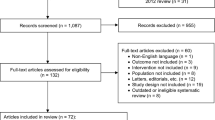Abstract
Antimuscarinic drugs form the mainstay of pharmacotherapy for the treatment of overactive bladder. The primary sites of activity of the agents for the desired therapeutic effect are the M3 and M2 receptors of the bladder. Drug interaction with other non-vesical muscarinic receptors produces a range of undesired adverse events. In general, certain adverse effects associated with antimuscarinic agents such as dry mouth (salivary) and constipation (colon) may be considered only bothersome, and somnolence and confusion (central nervous system) may be considered more serious in nature. However, effects on the myocardium are considered to be more significant safety issues and increased awareness and understanding of the effect of drugs on the myocardium, including the additional effects of drug-drug interaction, has increased a need for the evaluation of new drugs for cardiac safety. The role of genetics (and the identification of populations at risk) in the causation of congenital dysrhythmias has received specific attention in this area. New drugs now must undergo more intense scrutiny and cardiac testing to evaluate their effects on cardiac rate and rhythm, especially the QT interval. The recently approved agents (trospium, solifenacin, darifenacin) used for the treatment of overactive bladder have been rigorously evaluated for these effects.
Similar content being viewed by others
References and Recommended Reading
Roden DM: Drug-induced prolongation of the Q-T interval. N Engl J Med 2004, 350:1013–1022. Excellent review of the status of drug induction of Q-T phenomena and the current status of same.
Langtree HD, McTavish D: Terodiline: a review of its pharmacological properties and therapeutic use in the treatment of urinary incontinence. Drugs 1990, 40:748–761.
Stewart DA, Taylor J, Gosh S, et al.: Terodiline causes polymorphic ventricular tachycardia due to reduced heart rate and prolongation of QT interval. Eur J Clin Pharmacol 1992, 42:577–580.
Thomas SHL, Higham PD, Hartigan-Go K, et al.: Concentration-dependent cardiotoxicity of terodiline in patients treated for urinary incontinence. Br Heart J 1995, 74:53–56. Analysis correlating cardiac side events with the magnitude of serum levels.
McCloud AA, Thorogood S, Barnett S: Torsade de pointes complicating treatment with terodiline. BMJ 1991, 302:1469.
Connolly MJ, Astrige PG, White EG, et al.: Torsade de pointes ventricular tachycardia and terodiline. Lancet 1991, 338:344–345.
Priori SG, Napolitano C, Schwartz PJ: Low penetrance in the long Q-T syndrome: clinical impact. Circulation 1999, 99:529–534. Consideration of the relationship between genetic constitution and development of overt cardiac dysrhythmias associated with the long Q-T syndrome.
Thompson D, Oster G: Use of terfenadine and contraindicated drugs. JAMA 1996, 275:1339–1341.
Scarpero HS, Dmochowski RR: Muscarinic receptors and the urinary bladder. Curr Urol Rep 2004, 4:421–428.
Bannerjee S, Routledge Pa, Pugh S, et al.: Poisoning with oxybutynin. Hum Exp Toxicol 1991, 10:225–226.
Wang PS, Levin R, Zhao S, Avorn J: Urinary antispasmodic use and the risks of ventricular arrhythmia and sudden death in older patients. J Am Geriatr Soc 2002, 50:117–124. Epidemiologic analysis of medication ingestion and cardiac events, considering the antimuscarinics, antihistamines, and concomitant administration of drugs with hepatic cytochrome activity.
Kang J, Chen XL, Wang H, et al.: Cardiac ion channel effects of tolterodine. J Pharmacol Exp Ther 2005, 308:935–940.
Jones SE, Shuba LM, Zhabyeyev P, et al.: Differences in the effects of urinary incontinence agents S-oxybutynin and terodiline on cardiac K(+) currents and action potentials. Br J Pharmacol 2000, 131:245–254.
Hussain RM, Hartigan-Go K, Thomas SH, et al.: Effect of oxybutynin on the QTc interval in elderly patients with urinary incontinence. Br J Clin Pharmacol 1996, 41:73–75.
Jones SE, Kasamaki Y, Shuba LM, et al.: Analysis of the electrophysiologic effects of short-term oxybutynin on guinea pig and rabbit ventricular cells. J Cardiovasc Pharmacol 2000, 35:334–340.
Appell RA: Clinical efficacy and safety of tolterodine in the treatment of overactive bladder: a pooled analysis. Urology 1997, 50(suppl 6A):90–96. Review of all of the clinical safety information associated with tolterodine.
Enablex Prescribing Information. http//www. novartis.com. Accessed August 19, 2005.
Vesicare Prescribing Information. http//www.astellis.com. Accessed August 19, 2005.
Ikeda K, Kobayashi S, Suzuki M, et al.: M(3) receptor antagonism by the novel antimuscarinic agent solifenacin in the urinary bladder and salivary gland. Naunyn Schmiedebergs Arch Pharmacol 2002, 366:97–103.
Sanctura Prescribing Information. http//www.indevus.com. Accessed August 19, 2005.
Author information
Authors and Affiliations
Rights and permissions
About this article
Cite this article
Dmochowski, R., Staskin, D.R. The q-t interval and antimuscarinic drugs. Curr Urol Rep 6, 405–409 (2005). https://doi.org/10.1007/s11934-005-0033-2
Issue Date:
DOI: https://doi.org/10.1007/s11934-005-0033-2




